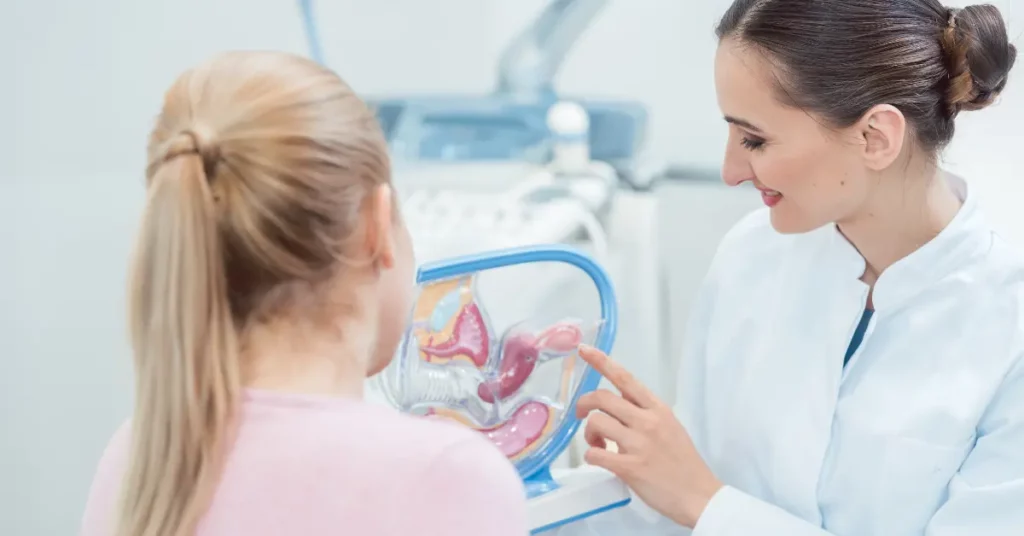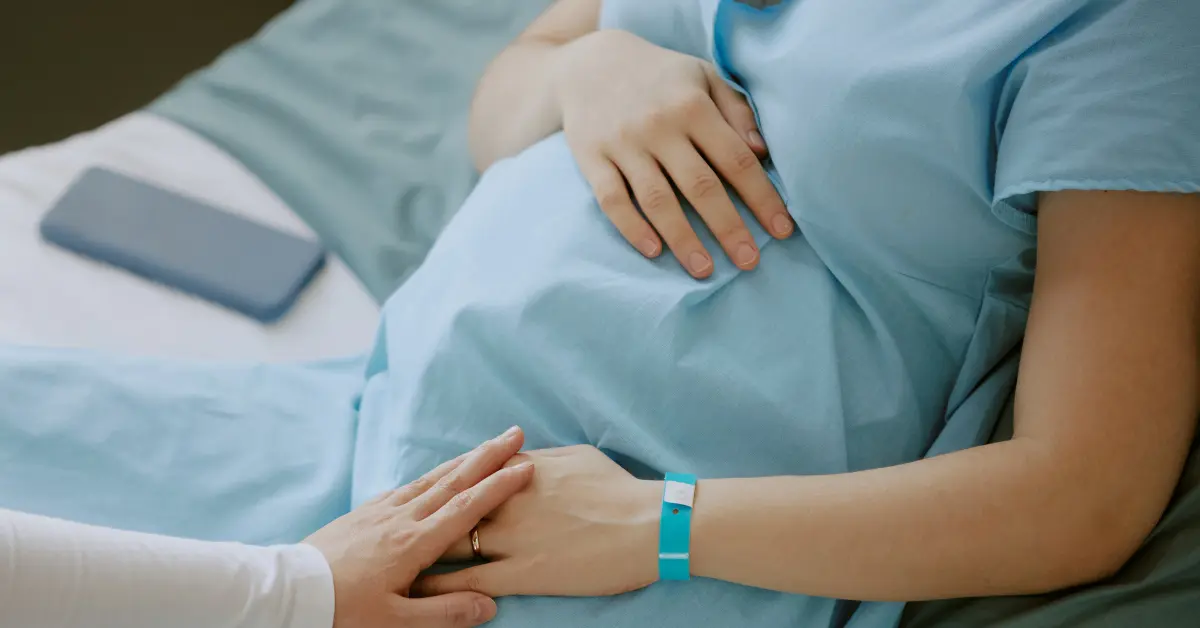Women are born with a finite ovarian egg reserve that diminishes over time. This ovarian aging begins before birth. A female fetus may have millions of eggs in her ovaries, but by puberty, only a few hundred thousand remain. As the female biological clock ticks, both egg quantity and quality decline. In general, fertility peaks in the early 20s and begins to decline after age 32. After about age 37–40, many women experience a much harder time conceiving naturally. The ovaries gradually lose eggs and reproductive potential with age, making age a key factor in family planning.

Ovarian Reserve: What It Is and How It Declines
The term ovarian reserve refers to the number of eggs (oocytes) remaining in the ovaries at any given time. Doctors estimate ovarian reserve to determine a woman’s fertility potential. For example, a newborn girl may have on the order of 7 million eggs, but by puberty, only about 200,000–400,000 remain. By menopause (around age 50–51), only roughly 1,000 eggs may be left. This means women lose eggs at a steady rate throughout life, tens of thousands of eggs each year. The decline of ovarian egg reserve is inevitable: no new eggs are produced after birth, so the pool of eggs simply shrinks and ages. A lower ovarian reserve means fewer eggs can be retrieved in fertility treatments and thus lower chances of pregnancy as age advances.
Fertility decline follows a predictable timeline for most women. Data indicate that at age 30, a healthy woman has about a 20% chance per menstrual cycle of conceiving, but this drops to ~15% by age 35 and only ~5% by age 40. The probability of getting pregnant after 35 falls steadily. For example, statistics show 85% of women conceive within one year by age 30, but only about 44% do so by age 40. In other words, a woman’s monthly fecundity diminishes sharply in her late 30s. The miscarriage rate also rises with age. These age effects explain why fertility specialists often recommend evaluation or treatment if a woman over 35 does not conceive after 6 months, since natural pregnancy chances are lower.
Ovarian Reserve Testing
Doctors use ovarian reserve testing to measure a woman’s remaining fertility potential. This typically involves an ultrasound of the ovaries and simple blood hormone tests. Clinics measure anti-Mullerian hormone (AMH) and follicle-stimulating hormone (FSH) in the blood and perform a transvaginal ultrasound to count antral follicles (AFC) in the ovaries. An ultrasound can reveal the number of developing follicles, while AMH level correlates with total egg count, and FSH reflects how the body responds to a new egg each month. These tests do not predict pregnancy per se, but they help doctors estimate how many eggs might be retrieved in an IVF cycle. Ovarian reserve testing is a fertility preservation screening tool used to assess ovarian function. It gives insight into egg quantity, even though it cannot fully predict future fertility.
Fertility Preservation Options
Fertility doctors often recommend preservation before cancer treatments or other surgeries that might harm the ovaries. In general, there are two main options:
- Egg freezing: Harvest multiple mature eggs after ovarian stimulation, then freeze (vitrify) them unfertilized.
- Embryo freezing: Retrieve eggs, fertilize them with sperm via IVF, then freeze the resulting embryos.
These technologies make it possible to delay childbearing without as much pressure from the biological clock, since the eggs were “paused” at a younger age.

Egg Freezing: Process and Considerations
The egg freezing process is typically done at a specialized fertility clinic. Because egg quality declines with age, timing matters. Candidates for the egg freezing procedure include women delaying childbearing for personal reasons or preparing for medical treatments that may impair fertility. Steps of the egg freezing process:
- Stimulation: The stimulation stage is the foundation of the egg freezing process, designed to encourage the ovaries to produce more than the single egg typically matured in a natural menstrual cycle. Patients begin a series of daily hormone injections that last about 10 to 14 days. These medications help multiple follicles in the ovaries grow simultaneously, giving doctors the opportunity to retrieve a higher number of mature eggs for preservation. Because egg quality and quantity are directly tied to fertility success, maximizing the number of viable eggs collected during a single cycle is crucial for enhancing future pregnancy chances. Stimulation is carefully timed and coordinated with the patient’s natural cycle, requiring consistent adherence to the injection schedule for the best results. For many, this step can be emotionally and physically demanding, as it involves daily injections and possible side effects such as bloating, mood swings, or temporary discomfort. However, with proper guidance from the medical team, most women tolerate the process well. Each injection moves the patient closer to the goal of obtaining a meaningful number of eggs that can later be frozen, giving them valuable reproductive flexibility. The stimulation stage sets the tone for the entire process, making it both a crucial and empowering phase of fertility preservation.
- Monitoring: This step involves a series of clinic visits for blood tests and ultrasound scans, often every few days, to measure hormone levels and assess follicle growth in real time. Bloodwork typically tracks estrogen and other hormone concentrations, while transvaginal ultrasounds visualize the ovaries and count developing follicles. The information gathered allows doctors to tailor medication dosages to each individual’s response, preventing overstimulation while promoting steady follicular growth. Adjustments are common since every woman’s body reacts differently to fertility medications. This highly personalized approach minimizes risks such as ovarian hyperstimulation syndrome (OHSS), a rare but serious condition. For patients, the monitoring stage requires commitment and flexibility, as frequent appointments are necessary to fine-tune treatment. Although it can feel intensive, this step offers reassurance because progress is carefully observed, reducing uncertainty about whether the medications are working as intended. Monitoring also provides a clear timeline for when egg retrieval will occur, giving patients a sense of structure and predictability.
- Egg Retrieval: This procedure is a roughly 20-minute outpatient process performed under sedation. Using transvaginal ultrasound guidance, a fine needle is carefully inserted into each ovary to aspirate and collect the mature eggs. The sedation ensures patient comfort during the minimally invasive procedure, which is a critical step in isolating the eggs for preservation.
- Freezing: Immediately following retrieval, eggs undergo vitrification, a rapid-freezing method that preserves their structure at the biological age they were collected. Unlike slow freezing, which risks forming ice crystals that can damage cells, vitrification cools the eggs so quickly that ice does not have time to form. Each egg is placed into a cryoprotectant solution and then submerged in liquid nitrogen, where it remains at ultra-low temperatures indefinitely. This state of suspended animation keeps eggs viable for years, making it possible for women to attempt pregnancy later in life with eggs that were frozen at a younger age. Success rates depend largely on the number and quality of eggs stored, which is why earlier freezing is often recommended. The vitrification process has revolutionized fertility preservation, with survival rates of thawed eggs significantly higher than older freezing techniques. Once stored, eggs can be retrieved and thawed when the patient is ready to undergo in vitro fertilization (IVF) and fertilize them. Beyond the science, freezing represents a profound emotional milestone, as women gain reassurance and flexibility in their family planning journey.
Today, top fertility treatment clinics offer elective egg freezing. Patients should note that success depends heavily on age at freezing and the number of eggs stored. Younger age and more eggs improve the odds of a future pregnancy.
Embryo Freezing and Assisted Reproduction
Embryo freezing is very similar to egg freezing, but it requires fertilizing the eggs first. In practice, the process begins the same way: hormone stimulation and egg retrieval. Once eggs are collected, embryologists fertilize them with sperm via IVF. The resulting embryos are then allowed to develop for a few days. Any good-quality embryos beyond what is immediately transferred can be frozen. Women often choose to freeze embryos if they have a partner or donor sperm available and want to maximize the chances of success.
When the patient is ready for pregnancy, one embryo is thawed and transferred into the uterus in a frozen egg transfer cycle (often called a frozen embryo transfer, FET). This gives flexibility: the transfer can be timed when the uterine lining is optimal. Some clinics advise transferring just one frozen embryo per cycle to reduce multiple pregnancy risks, then repeating if needed. Over time, multiple embryos can be frozen, increasing the cumulative chance of achieving a pregnancy.
Embryo freezing shares many similarities with egg freezing, but it adds the IVF fertilization step. Clinics may recommend embryo freezing for those certain about wanting a pregnancy soon or who have a partner’s sperm. In all cases, embryo cryopreservation is a reliable method of fertility preservation, with very high survival rates of thawed embryos. As the pregnancy is attempted later, IVF success rates with a frozen embryo are generally similar to fresh IVF, depending on factors like age and embryo quality
Choosing a Fertility Preservation Clinic
Women and couples should seek a reputable fertility preservation clinic that offers the needed services and support. Important factors include the clinic’s technology, lab quality, and success rates. Patients should also ensure the clinic provides counseling about all options and realistic success odds.
For instance, one may consider a specialist like the Fertility Institute of Hawaii, which provides both egg and embryo freezing services. Check if the clinic is accredited by the College of American Pathologists (CAP) and has experienced reproductive endocrinologists. Many top clinics offer informational seminars that allow you to meet the doctors and staff. Selecting a clinic is a balance of credentials, personal comfort with the team, and clarity about fertility preservation goals. Clinics that emphasize patient support and individualized care tend to yield better experiences.
Costs of Egg Freezing and IVF
Cost is a major consideration in fertility preservation. The egg freezing price can vary widely by region and clinic. The average cost of one egg freezing cycle in the U.S. is about $14,364. A “cycle” price generally includes monitoring, egg retrieval procedure, and cryopreservation of the eggs, but patients should verify what is covered. In addition to the cycle fee, medications to stimulate the ovaries typically cost several thousand dollars per cycle. Most women also pay annual storage fees for frozen eggs.
It’s important to budget for the total cost of egg retrieval and freezing. Clinics may quote separate fees for the retrieval surgery, the laboratory work, and anesthesia. Many also require an annual charge for long-term egg storage. Some employers and insurance plans partially cover egg freezing, but coverage is not guaranteed. Similarly, embryo freezing costs are comparable. Patients should inquire in advance about all fees: consultations, blood tests, ultrasounds, retrieval, embryo culture, freezing, and storage. Financing options exist at some centers. Also, newer models allow “bundle” pricing for multiple cycles or combinations of services. Preserving fertility is a significant investment: one cycle often costs in the mid-five figures. When comparing clinics, ask for an itemized fee schedule. While price is important, it should be weighed against a clinic’s expertise and success track record.

Fertility preservation empowers women to take proactive steps in planning their future, especially as ovarian aging remains an unavoidable biological reality. While egg and embryo reserves naturally decline with age, advances in reproductive medicine provide meaningful options to safeguard fertility potential. From ovarian reserve testing to egg and embryo freezing, these tools give individuals more control over their reproductive timelines and expand possibilities for family building later in life. By combining medical insight with thoughtful planning, women can better align their reproductive choices with their life circumstances, maximizing their chances of success when the time to pursue pregnancy arrives.
Sources
- Healthline – “Biological Clock in Women: What to Know About Age and Fertility” healthline.com
- University of California, San Francisco (UCSF) – “Ovarian Reserve Testing: Range, Purpose & Results” crh.ucsf.edu
- Sharp Health News – “Fertility after 35: Your Questions, Answered” sharp.com
- Cleveland Clinic – “Ovarian Reserve Testing” my.clevelandclinic.org
